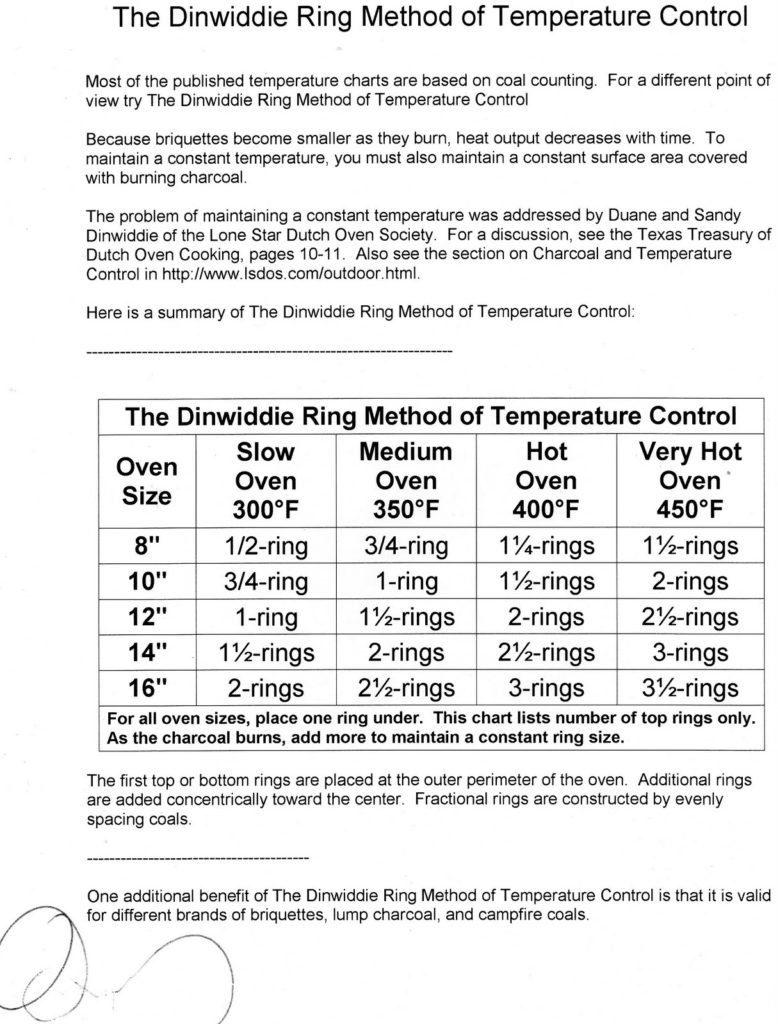Dutch Oven – More on temperature control
Originally posted Mar 11, 2010 on old blog
I’ve already admitted that I enjoy just getting my oven’s up to about 325°-350° and adjusting my recipes with cooking time. Guess you may have detected that I am a “low and slow” fanatic when it comes to outdoor cooking. Just the same there are some dishes like PIZZA that need the higher temperatures for the best results in a dutch oven. Lodge Manufacturing helped with this some years ago by putting out their “Lodge Charcoal Temperature Chart for Dutch Oven Cooking”.
Here is a representation of that chart. Note – you really need to be using good coals for this to have any accuracy:
| Oven | 325° | 350° | 375° | 400° | 425° | 450° |
| 8” | 10/5 | 11/5 | 11/6 | 12/6 | 13/6 | 14/6 |
| 10” | 13/6 | 14/7 | 16/7 | 17/8 | 18/9 | 19/10 |
| 12” | 16/7 | 17/8 | 18/9 | 19/10 | 21/10 | 22/11 |
| 14” | 20/10 | 21/11 | 22/12 | 24/12 | 25/13 | 26/14 |
The fractions give the number of coals on top/bottom of the oven.
Once again – I have to point out that “it depends upon what you are cooking and how you are cooking it” to get it right on the number of coals top/bottom. Are you baking, roasting, stewing, boiling? Even the temperature/wind of the outdoor environment you are cooking in “today” can have an impact. If it is a hot day outside with calm winds, you might want to consider reducing a coal or two. Like all outdoor cooking, it is far more of an art than an exact science. 8)
Dinwiddie Ring Method of Temperature Control
The final way, and one that really makes better sense to some folks – particularly those who use different sizes of charcoal briquettes than the standard Kingsford stuff – is Duane Dinwiddie’s Ring Method:
(Note: You can left-click on image above to see it in full size)
